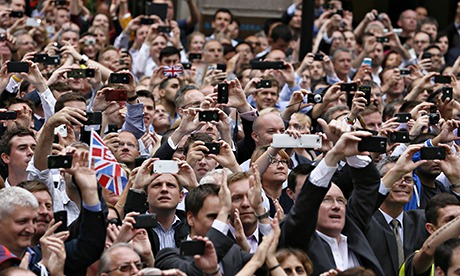We all know the difference between good pictures and bad pictures. Almost everyone that has a camera phone and have access to photo plugins become instant photography professionals – they can edit, filter and publish right from their phones. On the other side of taking photos, are your viewers. They can judge bad photos at the drop of a hat and simply ignore what you shared.
So whether you’re posting photos for your 300 closest friends to double-tap and hit “Like”, or you run your Fortune 500 company’s Facebook– consider the following thoughts before hitting the share button.
1. Consider the best composition.
If you’re going to be sharing on your favorite social outlet, think about the positioning and framing as you’re lining up the shot. Are they any distracting objects in the background? Is it too dark/too light? Are you following the Rule of Thirds? The Rule of Thirds is one of the easiest tricks to follow to capture more interesting shots. Check out this quick demo on the Rule of Thirds – In other words, don’t just get the photos you want to take, make the photos you want to have.
2. Have compelling content.
Make sure you’ve got compelling stuff in your images that are amusing, appealing and quite frankly, something that people can talk about. Remember that filters don’t make your photos beautiful, but it’s the subject you’re capturing that makes all the difference.
3. Make your photos share-worthy.
I’m not talking about the awesome selfies you take every day, but the variety and unique things you take photos of. There are a couple of things people are tired of seeing: Selfies, the food you’re about to eat, and cringe-worthy portraits where you attempt to look like someone you’re not (Okay, maybe the last example is worthy enough to pass along to friends).
4. Tag Intelligently.
So, if you’re sharing on Facebook or Instagram, who can you tag? Is this something that other people will want to share on their own walls, or even allow themselves to be in it? Don’t embarrass anyone. Get their permission first before you get some messages.
5. Zoom with your legs.
Using the zoom function on today’s phones doesn’t really create the same quality as using a zoom lens on a standard SLR camera. Every phone camera’s zooming capabilities will likely get better with each new release. You should consider walking back to capture a bigger scene up or walk forward to get a more personal close up. Taking quick shots are ok, sometimes you can get lucky, but you really can never beat a great photo you worked hard for.
6. Natural light is your best lighting tool.
Granted, there will be scenarios where you have to use a flash, but do your best to find sources of light that are outside your camera. If you’re taking product shots and can move your product near a window, do that. If you have human subjects, make them move so they’re not standing under weird overhead lights. If you have the time, it’s always worth the extra minute to compose your perfect picture before you hit the shutter. Also, since there’s no knowing when you have to take that opportune photo, consider the Golden Hours of Photography for the optimum breathtaking shots
If you’re self conscious of your photography skills, don’t worry. Keep these things in mind and remember: “the best camera is the one you have with you.” – Chase Jarvis
